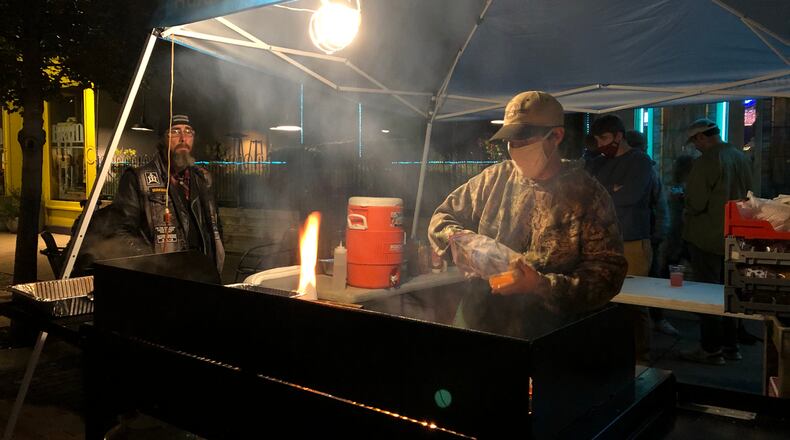Local employers added 700 workers in September, which was less than half of August’s payroll gains and a quarter of July’s new jobs, according to preliminary data from the U.S. Bureau of Labor Statistics.
The economic slowdown comes at a time when there is growing concern that surging numbers of new coronavirus cases locally and across the state could cause additional economic disruption.
“Rising cases will have an impact on our economy ― a negative one,” said Zach Schiller, research director with Policy Matters Ohio.
Despite slowing growth, the region saw a smaller employment decline during the worst month of the coronavirus recession than Ohio’s other large urban areas. That’s an indication that the Miami Valley does not have as long of a climb back to pre-pandemic employment levels, some economic experts say.
“I am not terribly concerned at this point,” said Kevin Willardsen, assistant professor of economics with Wright State University. “These numbers are pretty much what I would expect, given that Dayton lost the fewest jobs as a percentage in April.”
Employment grew 0.2% in the Dayton metro area last month, down from 0.4% growth in August (+1,600 jobs), according to the preliminary, seasonally adjusted data.
Payrolls increased 0.8% in July (+3,000 jobs) and 3.6% in June (+12,700 jobs).
The metro area consists of Montgomery, Greene and Miami counties.
After shedding 46,900 jobs during the statewide stay-at-home order in April and May, the Dayton region has now recovered 26,000 of those losses (55.4% of the total).
But Dayton is not creating new jobs at the same pace as most other Ohio metro areas.
Last month, only Toledo and Youngstown had slower growth, and Canton’s was the same.
Ohio’s payrolls expanded by 0.8% in September, quadrable Dayton’s growth rate. In August, only Lima had weaker job creation than the Dayton metro area.
But the Dayton region saw a smaller decline in employment in April (-11.6%) than any other Ohio metro area. In comparison, Ohio’s payrolls shrank more than 15% that month.
Dayton has recovered more of the jobs it lost than six of the other 10 metro areas.
Willardsen, the WSU professor, said he expects relatively slow growth until the virus threat passes. If a “perfect" vaccine was available tomorrow, some parts of the economy would rapidly rebound, he said.
Willardsen thinks that about half of the jobs lost during the pandemic will return fairly quickly once the crisis is over, including at restaurants and entertainment businesses.
However, the COVID-19 also has hastened the demise of some industries and has changed consumption patterns and consumer preferences and behaviors, possibly permanently, he said.
Many people are now buying things online that they used to purchase at brick-and-mortar stores. These trends may persist after COVID-19, as some jobs are never going to return.
Certain sectors have been hit harder than others.
For instance, last month, leisure and hospitality employment in the Dayton region was down 3,000 jobs from September 2019 (-7.5%), according to not seasonally adjusted data.
Transportation, warehousing and utilities had 1,000 fewer workers than a year ago (-7.9%). Retail trade employment is down 1,800 jobs (-4.7%).
In the last 12 months, education and healthcare payrolls have shrank by 2,900 workers (-3.9%) and manufacturing has lost 1,300 jobs (-3%).
Many health experts predict the coronavirus outbreak will worsen in the fall and winter months.
Ohio already has set new records for COVID-19 infections this month, including a new high of 2,366 cases on Wednesday.
People won’t feel comfortable going out and spending money if cases are growing at alarming rates, said Schiller of Policy Matters Ohio, the liberal leaning research group.
“It’s just going to make normal life impossible,” he said.
Rising cases will put additional strains on the economy, and hard-hit sectors such as leisure and hospitality, entertainment and travel could decline even more , leading to additional layoffs and more closures, he said.
Schiller said it’s unsurprising that job growth has been slowing.
He says that is likely to continue unless more stimulus is put into the economy or the virus is brought better under control.
Even if additional lockdown measures are not in store, rising cases will change consumers' habits, he said.
States that did not impose stay-at-home orders and restrictions like Ohio still saw massive declines in business activities, dining and drinking out because people did not feel safe, he said.
About the Author

